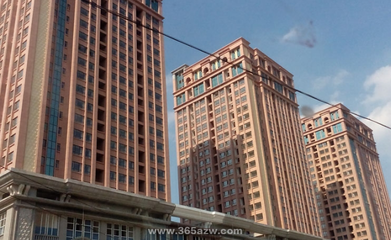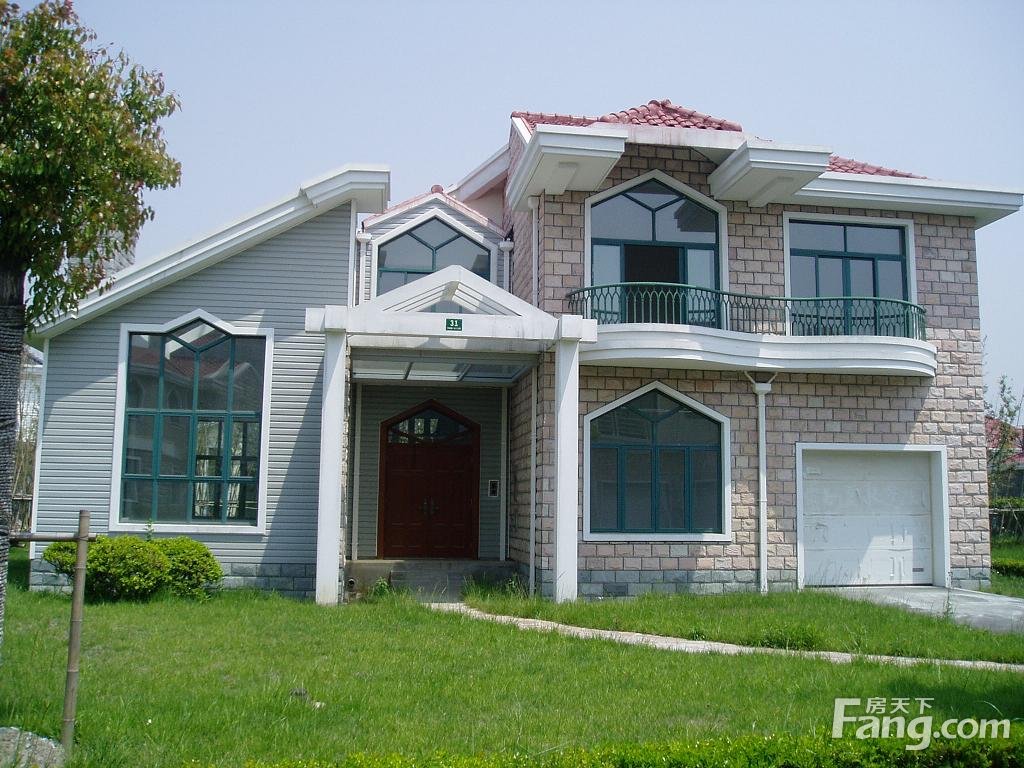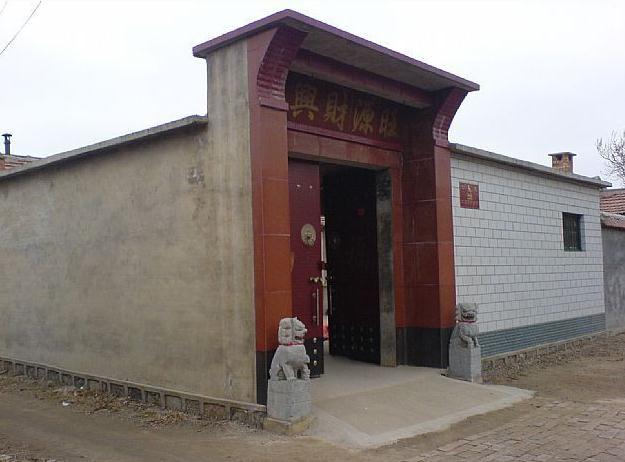虎年和虎年结婚有什么禁忌?
男生生肖:寅虎 VS 女生生肖:寅虎 生肖配对恋爱建议: 你们是具备许多先天共同点的一对。两个人都活力四射。惹人喜爱!但与此同时。两个人又都叛逆、任性!互不相让。在一起时彼此有任何不满都会脱口而出。婚后一旦某一方在争论中感觉受到了伤害。家庭关系就会变得紧张起来,你们都是以自我为中心的人,需要充分的自由空间与与时间,轻松幽默是消除你们之间矛盾的灵丹妙药、另外有一点需要你们共同努力并且相互制约、那就是家庭的的开支,由于你们两人都讲求高品质的生活。2411一定要谨防有一天出现资不抵债的情形呦?、
今年是虎年用英语怎么说
this year is tiger year,
急!!!求做一份虎年春节的英语小报!
The Origin of Chinese New Year The Chinese New Year is now popularly known as the Spring Festival because it starts from the Begining of Spring (the first of the twenty-four terms in coodination with the changes of Nature). Its origin is too old to be traced. Several explanations are hanging around. All agree, however, that the word Nian, which in modern Chinese solely means "year", was originally the name of a monster beast that started to prey on people the night before the beginning of a new year. One legend goes that the beast Nian had a very big mouth that would swallow a great many people with one bite. People were very scared. One day, an old man came to their rescue, offering to subdue Nian. To Nian he said, "I hear say that you are very capable, but can you swallow the other beasts of prey on earth instead of people who are by no means of your worthy opponents?" So, it did swallow many of the beasts of prey on earth that also harrassed people and their domestic animals from time to time. After that, the old man disappeared riding the beast Nian. He turned out to be an immortal god. Now that Nian is gone and other beasts of prey are also scared into forests, people begin to enjoy their peaceful life. Before the old man left, he had told people to put up red paper decorations on their windows and doors at each year's end to scare away Nian in case it sneaked back again, because red is the color the beast feared the most. From then on, the tradition of observing the conquest of Nian is carried on from generation to generation. The term "Guo Nian", which may mean "Survive the Nian" becomes today "Celebrate the (New) Year" as the word "guo" in Chinese having both the meaning of "pass-over" and "observe". The custom of putting up red paper and firing fire-crackers to scare away Nian should it have a chance to run loose is still around. However, people today have long forgotten why they are doing all this, except that they feel the color and the sound add to the excitement of the celebration. ---------------------------------------------------------------------------------------------------------------------- The Spring Festival is the most important festival for the Chinese people and is when all family members get together, just like Christmas in the West. All people living away from home go back, becoming the busiest time for transportation systems of about half a month from the Spring Festival. Airports, railway stations and long-distance bus stations are crowded with home returnees. Strictly speaking, the Spring Festival starts every year in the early days of the 12th lunar month and will last till the mid 1st lunar month of the next year. Of them, the most important days are Spring Festival Eve and the first three days. The Chinese government now stipulates people have seven days off for the Chinese Lunar New Year. Many customs accompany the Spring Festival. Some are still followed today, but others have weakened. On the 8th day of the 12th lunar month, many families make laba porridge, a delicious kind of porridge made with glutinous rice, millet, seeds of Job's tears, jujube berries, lotus seeds, beans, longan and gingko. The 23rd day of the 12th lunar month is called Preliminary Eve. At this time, people offer sacrifice to the kitchen god. Now however, most families make delicious food to enjoy themselves. After the Preliminary Eve, people begin preparing for the coming New Year. This is called "Seeing the New Year in". Store owners are busy then as everybody goes out to purchase necessities for the New Year. Materials not only include edible oil, rice, flour, chicken, duck, fish and meat, but also fruit, candies and kinds of nuts. What's more, various decorations, new clothes and shoes for the children as well as gifts for the elderly, friends and relatives, are all on the list of purchasing. Before the New Year comes, the people completely clean the indoors and outdoors of their homes as well as their clothes, bedclothes and all their utensils. Then people begin decorating their clean rooms featuring an atmosphere of rejoicing and festivity. All the door panels will be pasted with Spring Festival couplets, highlighting Chinese calligraphy with black characters on red paper. The content varies from house owners' wishes for a bright future to good luck for the New Year. Also, pictures of the god of doors and wealth will be posted on front doors to ward off evil spirits and welcome peace and abundance. The Chinese character "fu" (meaning blessing or happiness) is a must. The character put on paper can be pasted normally or upside down, for in Chinese the "reversed fu" is homophonic with "fu comes", both being pronounced as "fudaole." What's more, two big red lanterns can be raised on both sides of the front door. Red paper-cuttings can be seen on window glass and brightly colored New Year paintings with auspicious meanings may be put on the wall. People attach great importance to Spring Festival Eve. At that time, all family members eat dinner together. The meal is more luxurious than usual. Dishes such as chicken, fish and bean curd cannot be excluded, for in Chinese, their pronunciations, respectively "ji", "yu" and "doufu," mean auspiciousness, abundance and richness. After the dinner, the whole family will sit together, chatting and watching TV. In recent years, the Spring Festival party broadcast on China Central Television Station (CCTV) is essential entertainment for the Chinese both at home and abroad. According to custom, each family will stay up to see the New Year in. Waking up on New Year, everybody dresses up. First they extend greetings to their parents. Then each child will get money as a New Year gift, wrapped up in red paper. People in northern China will eat jiaozi, or dumplings, for breakfast, as they think "jiaozi" in sound means "bidding farewell to the old and ushering in the new". Also, the shape of the dumpling is like gold ingot from ancient China. So people eat them and wish for money and treasure. Southern Chinese eat niangao (New Year cake made of glutinous rice flour) on this occasion, because as a homophone, niangao means "higher and higher, one year after another." The first five days after the Spring Festival are a good time for relatives, friends, and classmates as well as colleagues to exchange greetings, gifts and chat leisurely. Burning fireworks was once the most typical custom on the Spring Festival. People thought the spluttering sound could help drive away evil spirits. However, such an activity was completely or partially forbidden in big cities once the government took security, noise and pollution factors into consideration. As a replacement, some buy tapes with firecracker sounds to listen to, some break little balloons to get the sound too, while others buy firecracker handicrafts to hang in the living room. The lively atmosphere not only fills every household, but permeates to streets and lanes. A series of activities such as lion dancing, dragon lantern dancing, lantern festivals and temple fairs will be held for days. The Spring Festival then comes to an end when the Lantern Festival is finished. China has 56 ethnic groups. Minorities celebrate their Spring Festival almost the same day as the Han people, and they have different customs. 中国新年的起源 农历新年是现在通常被称为春节,因为它开始从最初的弹簧(第24术语的变化与大自然的共用,它的起源是太老了,不能被追踪,有几种解释闲荡!所有的同意,无论如何,这个词,而仅仅意味着现代汉语中“年”,最初的名字的怪物的兽,开始在人们的前一晚,新的一年的开始、 传说有一个叫“年”的怪兽,有一个大嘴巴,会吞下很多人用一口,人们都很害怕,有一天,一位老人来拯救他们,提提供制服撵出来,他对年说:“我听到说你很能干,但你可以吞食猎物的地球上其他牲畜代替人绝不是你值得对手吗?”所以,它吞下很多的野兽,地球也harrassed捕食家畜,他们的确是的爱好艺术的确是的人。 之后,这位老人消失骑骑的怪兽!他原来是不朽的神、如今年过去了,其他野兽的猎物还害怕进入森林,人们开始享受宁静的生活、那位老人离开前,他曾告诉人们把红纸上装饰窗户,每年年末都来吓跑年的情况下溜回,因为红的颜色是兽害怕。 从那时起,传统的观察征服年进行,直到万代,术语“过年”,这也许意味着“存活”成为今天的“庆祝”(新)年度“郭”在中国拥有两"的意思pass-over”和“观察”!习惯的贴红纸,方鞭炮来吓跑年应该有机会还健在。松然而,今天的人们已经遗忘他们为什么要这么做的原因,只是觉得色彩和声音增添了刺激的庆祝活动! —————————————————————————————————————————————————————————————————————————————————————————————————————————————————————— 春节是中国最重要的节日,人们是所有家庭成员聚在一起的时候,就像西方的圣诞节、所有人离家回去,成为最繁忙的交通系统的时间大约半个月的春节。机场、火车站!长途汽车站挤满家返回者。 严格地说,春天节日开始每年在早期的第12个太阴月,最后7223将在第一个太阴月到明年!其中最重要的就是除夕和春节前三天、中国政府允许有7天为中国农历新年! 许多关关税陪伴过春节?有些一直沿用到今天,有些已经失传了。 在农历12月的第八天,许多多家庭会熬腊八粥,美味的粥由糯米。小米。种子,枣,莲子。豆类、龙眼、银杏! 23日的第12个太阴月叫做初9171步的前夕,就在这这个时候,人们对厨房神献祭,然而,大多数家庭现在享受自己制造可口的食物、 在初步的前夕之后,人们开始准备即将到来的新年!这就是所谓0940的“见到新年进入”? 商店老板正忙着当每个人都出去买必需品的新年!材料不仅包括食用油、大米、面粉!鸡、鸭。鱼、肉,而且坚果的水果,糖果和类型。更重要的是,各种不同的装饰,新衣服和鞋给孩子们的礼物以及老年,朋友和亲戚,都是购买的目录上。 春节到来之前,人们室内和室外的家园,以及他们的衣服。床上用品,所有的器具。 那人开始装饰他们清理房间的气氛为特色的欢呼和盛宴!所有的门都会贴春联,中国书法与黑人在红纸?内容包括房主的祝福,愿你拥有一个光明的前途,祝新年快乐。同样,图片门的神和财富的将会出现在前门辟邪,受欢迎的和平和丰富, 汉字“赋”(意思是福还是幸福)是必须的,人物放在纸上可粘贴或颠倒了,通常在中国的“反富”与“赋”的谐音来,都是发成“fudaole。”更重要的是,两大灯笼都可以提高两边的大门,红色的剪纸窗户玻璃,色彩鲜艳的年画和贴在墙上! 人们重视春节前夕。那时,所有的家庭成员一起吃晚餐,这顿饭是比平常更多的奢侈。的的菜肴,比如鸡肉!鱼肉和和豆腐不能排除,因为在中国,他们的发音,分别是“吉”?“玉”和“香瓜子”,代表吉兆,丰富和丰富的内涵。晚饭后,全家人会坐在一起聊天,看电视,近年来,春节晚会上播出中国中央电视台(CCTV)是必不可少的娱乐为中国海内外!按照习俗,每个家庭将会熬夜,迎接新年的到来! 在新年醒来时,每个人都盛妆打扮!首先,他们将给他们的父母!然后每个孩子都会得到的钱作为新年礼物,在红色的纸包裹起来。在中国北方人会吃饺子,或者饺子,吃早餐,因为他们认为“饺子”,意思是“招标的声音在新”、同时,形状像金子一样的饺子是中国古代锭从、所以人们吃他们,希望为金钱和财富! 中国南方吃蛋糕做niangao(新年)——一种用糯米包包在这种场合,因为作为引导?niangao意味着“高而又高,一年之后,另一个问题!”第5天之后,春节是一段美好的时光,亲戚,朋友、同学以及同事交换问候,礼品和聊天悠闲、 放烟花是最典型的习俗的春节、人们4411认为爆裂的声音能够驱走妖魔鬼怪?然而,如此的一个活动被完全或3595部分禁止大城市的政府出于安全,噪音和污染的考虑、作为替代,一些以爆竹声音买音带听,一些休息一点点猛涨到声音太,而另一些人买爆竹手工工艺挂在屋子里。 活泼的气氛不只填充每个家庭,而且且大街小巷也是如此。一系列的活动,如舞狮,舞龙、灯笼节日和寺庙庙展览会将于数天,春节然后结束在元宵节是完成、 中国有56个民族。少数几乎庆祝他们的春天节日那天,汉族有不同的习俗。!
虎年出生女孩起名
王雨薇 王水瑶 王凌菲 王歆瑶 王夏岚 王曼玉。
“虎年大吉 万事如意”的英文翻译
Good luck in the year of tiger and everything goes well.!
虎年佩戴什么属相
生肖属虎的吉吉祥物品:生肖属虎(年地支为:寅)的人,他的三合及六合瑞物为马!狗及猪。所以在佩戴方面!无论金牌抑或玉佩,都以这三种动物造形为主。 生肖属虎的不吉祥物品:生肖属虎(年地支为:寅)的人。他的相冲凶物为猴(寅申相冲)、所以在8548佩戴方面!无论金牌抑或玉佩!都都忌佩戴这种动物造形,、
1986年虎年是五行什么命?
五行八字分析结果 生日(公历): 1986年10月30日3时0分 生日(农历):丙寅年九月廿七寅时 八 字:丙寅戊戌丁未壬寅 五 行:火木土土火土水木 纳 音:炉中火平地木天河水金箔金 五行分析: 总述:八字偏强,八字喜「金」,起名最好用五五行属性为「金」的字?分析如罚: 此命五行土旺。五行缺金!日主天干为火 (同类为:火木?异类为:金金水土,五行统计: 2木, 2火, 3土, 0金, 1水) 用神分析:〖同类得分〗:火3.22!木1.60,共计4.82分。〖异类得分〗::金0.35?水1.06!土2.28、共计3.69分。〖差〗:1.14分!〖综合旺衰得分〗:1.14分、「八字偏强」!〖八字喜用神〗:八字偏强。八字喜「金」,「金」就是此命的「喜神」,、
虎年的春联
2010春联-虎年春联-春联大全 东风化雨山山翠 政策归心处处春 横批:春风化雨 冬去山川齐秀丽 喜来桃里共芬芳 横批:新年大吉 多劳多得人人乐 丰产丰收岁岁甜 横批:形势喜人 发愤图强兴大业 勤劳致富建小康 横批:科技致富 福旺财旺运气旺 家兴人兴事业兴 横批:喜气盈门 福星高照全家福 春光耀辉满堂春 横批:春意盎然 高居宝地财兴旺 福照家门富生辉 横批:心想事成 和顺门第增百福 合家欢乐纳千祥 横批:欢度春节 和顺一门有百福 平安二字值千金 横批:万象更新 红梅含苞傲冬雪 绿柳吐絮迎新春 横批:欢度春节 欢声笑语贺新春 欢聚一堂迎新年 横批:合家欢乐 欢天喜地度佳节 张灯结彩迎新春 横批:家庭幸福 家过小康欢乐日 春回大地艳阳天 横批:人心欢畅 精耕细作丰收岁 勤俭持家有余年 横批:国强富民 旧岁又添几个喜 新年更上一层楼 横批:辞旧迎新 绿竹别其三分景 红梅正报万家春 横批:春回大地 民安国泰逢盛世 风调雨顺颂华年 横批:民泰国安 内外平安好运来 合家欢乐财源进 横批:吉星高照 年年顺景则源广 岁岁平安福寿多 横批:吉星高照 日出江花红胜火 春来江水绿如蓝 横批:鸟语花香 日日财源顺意来 年年福禄随春到 横批:新春大吉 事事如意大吉祥 家家顺心永安康 横批:四季兴隆 岁通盛世家家富 人遇年华个个欢 横批:皆大欢喜 天地和顺家添财 平安如意人多福 横批:四季平安 天增岁月人增寿 春满乾坤福满楼 横批:四季长安 万事如意展宏图 心想事成兴伟业 横批:五福临门 五湖四海皆春色 万水千山尽得辉 横批:万象更新 喜居宝地千年旺 福照家门万事兴 横批:喜迎新春 一帆风顺吉星到 万事如意福临门 横批:财源广进 一帆风顺年年好 万事如意步步高 横批:五福临门 一帆风顺年年好 万事如意步步高 横批:吉星高照 一干二净除旧习 五讲四美树新风 横批:辞旧迎春 一年好运随春到 四季彩云滚滚来 横批:万事如意 一年四季春常在 万紫千红永开花 横批:喜迎新春 一年四季行好运 八方财宝进家门 横批:家和万事兴 迎喜迎春迎富贵 接财接福接平安 横批:吉祥如意 迎新春江山锦绣 辞旧岁事泰辉煌 横批:春意盎然 迎新春事事如意 接鸿福步步高升 横批:好事临门 占天时地利人和 取九州四海财宝 横批:财源不断 壮丽山河多异彩 文明国度遍高风 横批:山河壮丽 百年天地回元气 一统山河际太平 横批:国泰民安 百世岁月当代好 千古江山今朝新 横批:万象更新 财连亨通步步高 日子红火腾腾起 横批:迎春接福 财源滚滚随春到 喜气洋洋伴福来 横批:财源广进 创大业千秋昌盛 展宏图再就辉煌 横批:大展宏图 春风入喜财入户 岁月更新福满门 横批:新春大吉 春归大地人间暖 福降神州喜临门 横批:福喜盈门 春临大地百花艳 节至人间万象新 横批:万事如意 春雨丝丝润万物 红梅点点绣千山 横批:春意盎然 大地流金万事通 冬去春来万象新 横批:欢度春节 大顺大财大吉利 新春新喜新世纪 横批:万事如意 丹凤呈祥龙献瑞 红桃贺岁杏迎春 横批:福满人间 2010春联(五字春联): 上联:春花含笑意 下联:爆竹增欢声 横批:喜气盈门 上联:黄莺鸣翠柳 下联:紫燕剪春风 横批:莺歌燕舞 上联:千年迎新春 下联:瑞雪兆丰年 横批:年年有余 上联:盛世千家乐 下联:新春百家兴 横批:欢度佳节 虎年春联(六字春联) 上联:大地歌唤彩云 下联:满园春关不住 横批:春色满园 上联:共享锦绣年华 下联:相伴健康天使 横批:福如东海 上联:喜滋滋迎新年 下联:笑盈盈辞旧岁 横批:喜迎新春 上联:悠悠乾坤共老 下联:昭昭日月争光 横批:欢度佳节 虎年春联(七字春联) 上联:百年天地回元气 下联:一统山河际太平 横批:国泰民安 上联:百世岁月当代好 下联:千古江山今朝新 横批:万象更新 上联:财连亨通步步高 下联:日子红火腾腾起 横批:迎春接福 上联:财源滚滚随春到 下联:喜气洋洋伴福来 横批:财源广进 上联:创大业千秋昌盛 下联:展宏图再就辉煌 横批:大展宏图 上联:春风入喜财入户 下联:岁月更新福满门 横批:新春大吉 上联:春归大地人间暖 下联:福降神州喜临门 横批:福喜盈门 上联:春临大地百花艳 下联:节至人间万象新 横批:万事如意 上联:春雨丝丝润万物 下联:红梅点点绣千山 横批:春意盎然 上联:大地流金万事通 下联:冬去春来万象新 横批:欢度春节 上联:大顺大财大吉利 下联:新春新喜新世纪 横批:万事如意 上联:丹凤呈祥龙献瑞 下联:红桃贺岁杏迎春 横批:福满人间 上联:东风化雨山山翠 下联:政策归心处处春 横批:春风化雨 上联:冬去山川齐秀丽 下联:喜来桃里共芬芳 横批:新年大吉 上联:多劳多得人人乐 下联:丰产丰收岁岁甜 横批:形势喜人 上联:发愤图强兴大业 下联:勤劳致富建小康 横批:科技致富 上联:福旺财旺运气旺 下联:家兴人兴事业兴 横批:喜气盈门 上联:福星高照全家福 下联:春光耀辉满堂春 横批:春意盎然 上联:高居宝地财兴旺 下联:福照家门富生辉 横批:心想事成 上联:和顺门第增百福 下联:合家欢乐纳千祥 横批:欢度春节 上联:和顺一门有百福 下联:平安二字值千金 横批:万象更新 上联:红梅含苞傲冬雪 下联:绿柳吐絮迎新春 横批:欢度春节 上联:欢声笑语贺新春 下联:欢聚一堂迎新年 横批:合家欢乐 上联:欢天喜地度佳节 下联:张灯结彩迎新春 横批:家庭幸福 上联:家过小康欢乐日 下联:春回大地艳阳天 横批:人心欢畅 上联:精耕细作丰收岁 下联:勤俭持家有余年 横批:国强富民 上联:旧岁又添几个喜 下联:新年更上一层楼 横批:辞旧迎新 上联:绿竹别其三分景 下联:红梅正报万家春 横批:春回大地 上联:民安国泰逢盛世 下联:风调雨顺颂华年 横批:民泰国安 上联:内外平安好运来 下联:合家欢乐财源进 横批:吉星高照 上联:年年顺景则源广 下联:岁岁平安福寿多 横批:吉星高照 上联:日出江花红胜火 下联:春来江水绿如蓝 横批:鸟语花香 上联:日日财源顺意来 下联:年年福禄随春到 横批:新春大吉 上联:事事如意大吉祥 下联:家家顺心永安康 横批:四季兴隆 上联:岁通盛世家家富 下联:人遇年华个个欢 横批:皆大欢喜 上联:天地和顺家添财 下联:平安如意人多福 横批:四季平安 上联:天增岁月人增寿 下联:春满乾坤福满楼 横批:四季长安 上联:万事如意展宏图 下联:心想事成兴伟业 横批:五福临门 上联:五湖四海皆春色 下联:万水千山尽得辉 横批:万象更新 上联:喜居宝地千年旺 下联:福照家门万事兴 横批:喜迎新春 上联:一帆风顺吉星到 下联:万事如意福临门 横批:财源广进 上联:一帆风顺年年好 下联:万事如意步步高 横批:五福临门 上联:一帆风顺年年好 下联:万事如意步步高 横批:吉星高照 上联:一干二净除旧习 下联:五讲四美树新风 横批:辞旧迎春 上联:一年好运随春到 下联:四季彩云滚滚来 横批:万事如意 上联:一年四季春常在 下联:万紫千红永开花 横批:喜迎新春 上联:一年四季行好运 下联:八方财宝进家门 横批:家和万事兴 上联:迎喜迎春迎富贵 下联:接财接福接平安 横批:吉祥如意 上联:迎新春江山锦绣 下联:辞旧岁事泰辉煌 横批:春意盎然 上联:迎新春事事如意 下联:接鸿福步步高升 横批:好事临门 上联:占天时地利人和 下联:取九州四海财宝 横批:财源不断 上联:壮丽山河多异彩 下联:文明国度遍高风 横批:山河壮丽 2010虎年春联大全(八字春联) 上联:春联对歌民安国泰 下联:喜字成双花好月圆 横批:国泰民安 上联:春满人间百花吐艳 下联:福临小院四季常安 横批:欢度春节 上联:春满人间欢歌阵阵 下联:福临门第喜气洋洋 横批:五福四海 2010虎年春联大全(不规则字春联) 上联:五更分两年年年称心 下联:一夜连两岁岁岁如意 横批:恭贺新春 上联:春色明媚山河披锦绣 下联:华夏腾飞祖国万年轻 横批:山河壮丽 上联:汗马绝尘安外振中标青史 下联:锦羊开泰富民清政展新篇 横批:春满人间 上联:惠通邻里,门迎春夏秋冬福 下联:诚待世贤!户纳东南西北财 横批:吉星高照 春联大全包括对联、春联属于楹联的一种。是一种独特的文学形式,它以工整。对偶!简洁、精巧的文字描绘绘时代背景。抒抒发美好愿望!是中国的文学形式!每逢春节、无论城市还是农村,家家户户都要精选一副大红春联贴于门上!为6998春节增加喜庆气氛、在虎年来来临之际,,
虎年有哪些年
虎年有哪些年: 19订6...1938...1950...1962...1974...1986...1998....2010!
虎年春节对联
2010虎年春节对联大全集锦(带横批) 虎气顿生年属虎 春风常驻户迎春 横批:五福四四海 虎气频催翻旧景 春风浩荡着新篇 横批:形势喜人 虎添双翼前程远 国展巨集图事业新 横批:山河壮丽 虎啸大山山献宝 龙腾祖国国扬威 横批:迎春接福 虎啸青山千里锦 风拂绿柳万家春 横批:喜气盈门 虎啸一声山海动 龙腾三界吉祥来 横批:心想事成 虎跃龙腾生紫气 风调雨顺兆俯年 横批:吉祥如意 虎跃龙腾兴骏业 莺歌燕舞羨鹏程 横批:大展巨集图 虎跃神州千业旺 春临盛世万民欢 横批:永珍更新 花事才逢花好日 虎年更有虎威风 横批:皆大欢喜 、



